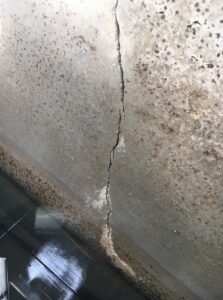Just like one gets regular oil changes to keep their car running, preventive asphalt maintenance will help keep the ride smooth for users, along with extending its life cycle. This blog presents some data showing how beneficial it is to focus on preventive maintenance on asphalt pavement instead of reactive rehabilitation or reconstruction. Graph A illustrates a potential schedule of pavement preservation actions that can prevent the need for these major rehabilitation or reconstruction actions altogether.

Investing in pavement preservation actions, such as crack sealing, full sealcoats, or a mill and overlay, will help extend the longevity of the pavement before a major rehabilitation or reconstruction action is needed. The cumulative costs for pavements are also reduced when preventive maintenance is performed, versus waiting to a point when major reconstruction is needed, as is shown by Graph B.

Just because there are a few cracks in some areas of a pavement, does not mean that the entire road needs to be completely replaced. Implementing a maintenance schedule for your paved areas – whether that consists of a single-family private driveway, or a multi-family housing community with multiple access roads and parking areas – can be beneficial in helping to identify any problem areas and project the future costs needed for upkeep in the years to come. Table 1 shows a potential way to organize a maintenance schedule for a site with multiple areas that need to be maintained.
Table 1 – Pavement Maintenance Schedule
| Year | Area | Crack Seal | Sealcoat | Mill & Overlay | Reconstruction | Total Annual Cost |
| 1 | A | — | $x.xx | — | — | $x.xx |
| B | — | — | $x.xx | — | ||
| 2 | C | $x.xx | — | — | — | $x.xx |
| D | — | — | — | $x.xx |
Altogether, maintenance leads to asphalt that stays in better condition for longer, at a typically reduced cost compared to a major intervention. It also saves time, frustration, and cost for any residents affected by the asphalt in question. Whether it’s a road, driveway, or parking area, brief periods of repair are less disruptive than major reconstruction or rehabilitation.










